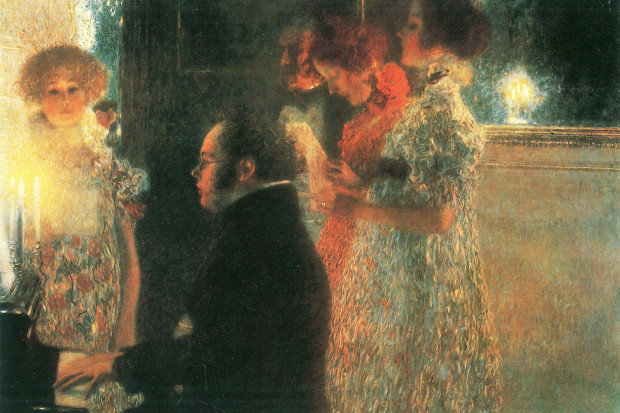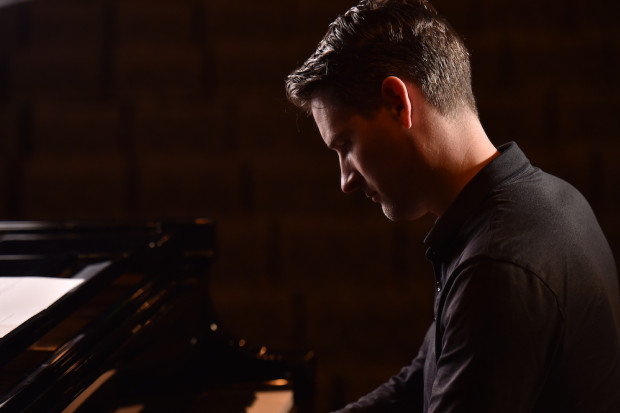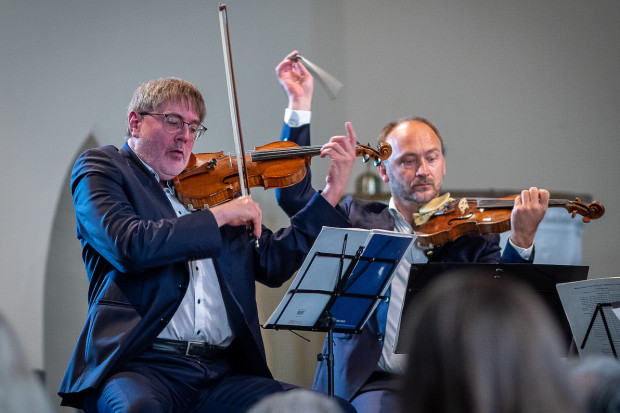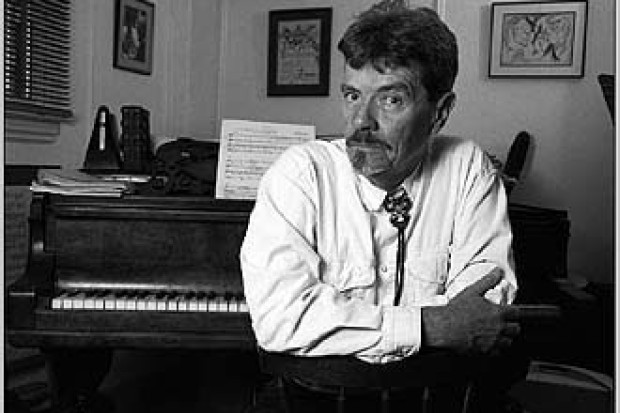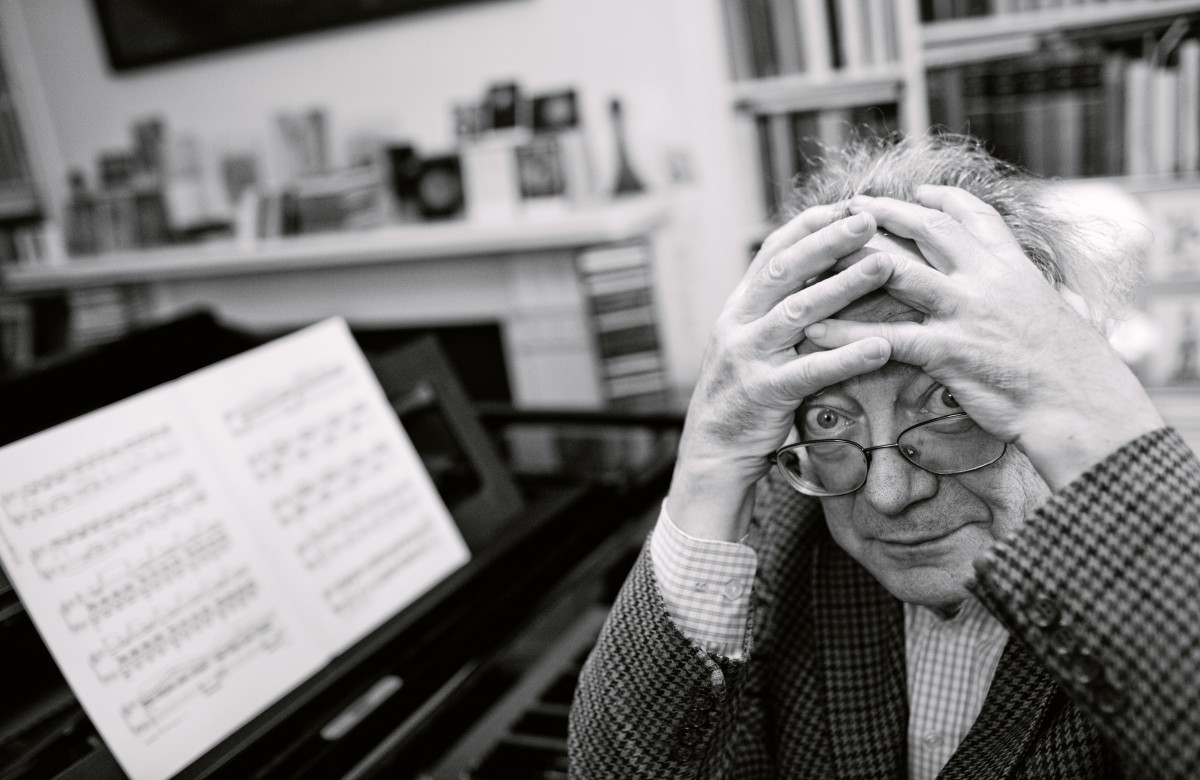
Alfred Brendel (Photo: Amy T. Zielinski)
Feeling and Thinking About Music
Alfred Brendel is known as a great pianist of the twentieth century. Though born in 1931 in what is now part of the Czech Republic, his international career really broke through in London. Through a long and distinguished concert career, and landmark recordings such as the first ever complete Beethoven cycle for Vox records in Vienna, he gained a worldwide reputation, performing for sixty years.
Unusually for a pianist of such stature, his background did not offer a promising start for such things as piano lessons; he had many teachers between the ages of six and sixteen, due to frequent moves (to Krk, Zagreb and Graz) not to mention a stint at 14 digging ditches in Yugoslavia for the German war effort. Not so surprisingly, then, he describes himself as ‘self-taught’.
This does not mean that he sat in isolation, however, rather it means that he took in a variety of musical and artistic contacts and occasional masterclasses, thought things through for himself, and pieced together his own approach and ideas. Perhaps this escape from over-exposure to strong personalities helped make him such a reflective pianist; he is surely among a small group including Schumann, Liszt, Busoni and Charles Rosen who not only played to a virtuoso level but found time to write thoughtfully about music.
Intellectual stall
Music, Sense and Nonsense gathers together a varied set of essays, articles, reviews and interviews from across his lengthy career, and so the texture and depth of writing varies as might be expected. However, humour, inventiveness of expression and a lively outward-looking mind always come through, giving the book some unity.
The organisation of the book also helps. Rather than a simple chronological ordering, the items appear by subject, with the weightier areas covered in the first half, creating two sections: the major and minor arcana of a career. The first section is given over to articles and essays, many of considerable depth, on a selection of composers and/or works – Mozart, Beethoven, Schubert, Liszt and Busoni. The second half includes every other kind of subject, with looser group headings, making it an easy book to navigate and return to.
Brendel sets out his intellectual stall early on in an essay on Beethoven’s piano sonatas:
I should say at the outset that the remarks that follow are those of a practical musician, and they apply first and foremost to practical performance. Further, although I find it necessary and refreshing to think about music, I am always conscious of the fact that feeling must remain the alpha and omega of a musician; therefore my remarks proceed from feeling and return to it.
This statement can be taken as a handy guide for the whole book, so long as the reader doesn’t imagine that Brendel is ever reluctant to go where thinking leads him.
He is witty and readable when launching an article with generalisations, such as here on Beethoven’s piano concertos:
If musical errors drag on, those performers responsible can be said to fall into three groups. The first, enthralled by printer’s ink, read music as uncritically as most people read their newspaper: they simply believe what they see. For the second type, the composer is an object of loathing. What they want is not a father-figure but some kind of musical parthenogenesis. Did the composer actually exist? And assuming he did, what does it matter today? Did he really know what he was doing? At any rate, we know better.
Somewhere in the middle are those musicians who do not take the trouble to ascertain that their text is correct. For them, life is too short for the fine print. They are happy to play the large print, whatever that may be, and with no matter what distortions it has arrived on the page.
This same short article on editions of Beethoven’s piano concertos then gets straight into a thorough account of first edition errors versus later manuscript discoveries and corrections, scrupulously mentioning all scholars and libraries along the way and including authoritative statements from Brendel himself on ambiguities over time signatures, and why he chooses Beethoven’s own neglected cadenza, discarded by others. In all this he manages to keep the writing almost as entertaining as that opening.
Emotional effects
Academic readers who are looking for contemporary scholarship of the sort that questions modern assumptions – or takes account of structuralism or post-structuralism, or postmodernism – will be disappointed, and may feel that the book is old-fashioned in its approach. There is also a great deal about emotional effects and character sketching that is sure to curl the toes of some academics. An abstract account of musical structure is rarely his approach. This means that it is a good book for the general reader of course, who has no idea what any of that is about.
There is only one nod to this modern academic zone:
Each Sonata by Beethoven has its own particular character. But is this really anything more than a platitude? Should we still be clinging to such concepts as ‘character’ and ‘atmosphere’? Aren’t the musical cognoscenti interested primarily in understanding ‘structure’, leaving something as vague as ‘poetic associations’ to amateurs? And haven’t the post-structuralists long since exposed ‘character’ as a mere illusion?
He draws on Schoenberg to get him out of this:
Arnold Schoenberg, whom no-one would accuse of being an amateur, recommended that… ‘in composing even the smallest exercises, the student should never fail to keep in mind a special character. A poem, a story, a play… may provide the stimulus to express definite moods. The pieces which he composes should differ widely.’
In those essays that get deeply into musical character and what we may think the composer is attempting to convey, Brendel’s rather colourful and sometimes fanciful negotiation of the score is buttressed by very solid scholarship in terms of relating his theses to autograph manuscripts scores, early editions, contemporary sources on the music, and surrounding contemporary scholarly discourse. In other words he takes full account of what everyone agreed composers were doing at the time they were doing it – including the composers themselves; and doesn’t worry about the modern tendency to unpick all that in the light of later advances in psychology or aesthetic theory. From the eras in discussion he cites composers, musicians, music writers, scholars and philosophers in reasonable profusion yet without cluttering or drying out the essays; rather these lubricate the writing – an achievement many other essayists could take a look at.
Brendel is very informative when he touches on what is in the score, especially when on the material evidence of what the markings of dynamic, articulation or tempo/expression can be trying to convey – for example in Haydn or Beethoven where humorous effects are being discussed. Thus one is reminded of the importance of reflection on – and of observing non-slavishly, in an informed way – the composer’s intentions. He is excellent when dealing with analytical issues such as how Beethoven ‘foreshortens’ musical material to create structural tension. This is pure exploration of how all the musical elements (not just themes) come together to create musical expression, without excessive recourse to emotive descriptors. And again excellent when unpicking errors that plague certain scores and which others have ignored, throwing light on the creatures that can even survive under the rock labelled ‘urtext’.
Prodigious tasks of memory
Elsewhere he brings us through a somewhat bizarre list of character titles he invents to differentiate the variations in Beethoven’s Diabelli set,
Theme: alleged waltz / Var. 1, March: gladiator flexing his muscles / Var. 2, Snowflakes / Var. 3, Confidence and nagging doubt / Var. 4, learned Ländler / Var. 5, Tamed goblin / Var. 6, Trill rhetorics (Demosthenes braving the surf) / Var. 7, Swivelling and stamping…
and so on for 25 more. He explains they were devised…
…to amuse myself, but also for practical purposes. In a cycle of variations or other shorter pieces, the switch from one character to the next has to be prompt and secure, the characters themselves sharply defined and clearly set apart from one another… the performer may find it useful to develop an acute verbal awareness of contrast, character and atmosphere to aid his psychological memory.
This is fair enough when one considers the prodigious tasks of memory Brendel undertook in his time; and in his well-rounded way he also mentions this as part of a tradition of other players such as Cortot and Rubenstein.
This book would stimulate any lover of classical music, probably being a book for dipping into randomly, and while dipping, any attentive reader will surely amplify the enjoyment by immediately going online to listen to different versions of works mentioned. With some examples, the most general reader can for once get into what all this fealty to the text business is about. I would also imagine that piano teachers and professional players would enjoy and learn from this, assuming they are readers at all. The only danger for musicians in handling this book is a creeping sense of their own inadequacy as they see how the really dedicated go about things.
After reading this book I would be compelled to go to Brendel’s interpretation first when it comes to recordings of the piano works he writes about.
Music, Sense and Nonsense: Collected Essays and Lectures by Alfred Brendel is published by The Robson Press
Published on 29 September 2015
John McLachlan is a composer and member of Aosdána. www.johnmclachlan.org












